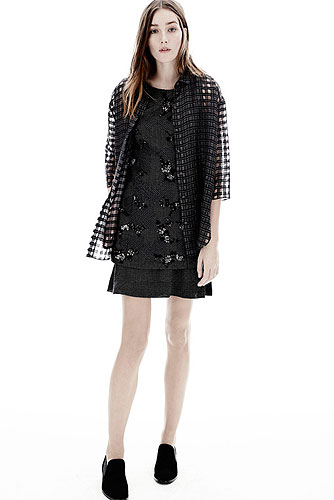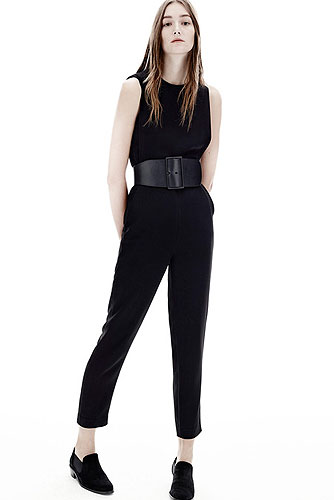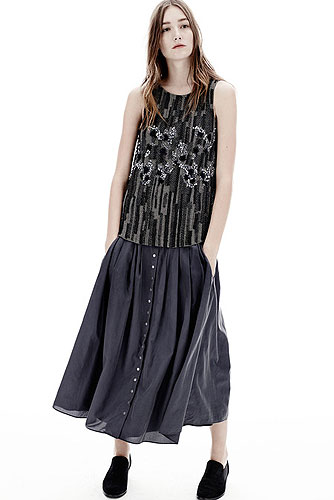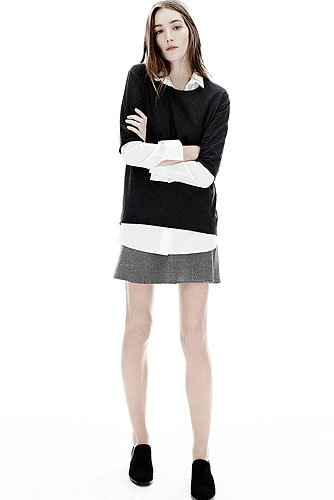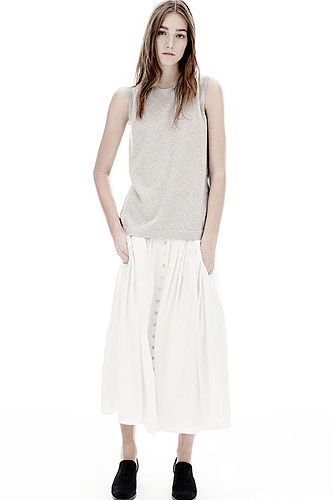NewYork fashion weekOlivier Theyskens' Theory is now Theory. It is still Theyskens'. The simplification is largely nominal: That is, Theyksens himself is and has been artistic director over the entire Theory enterprise, so rather than continue both having a Theory collection and allowing the designer a subcollection of his own, the brand opted to unify it all under one label. It's a paring down in name, but a paring down in effect, too. Under the new Theory banner, Theyskens has restrained some of the more high-fashion impulses that made TT appealing to a privileged few and—in all honesty—head-scratching to a greater many. "We're focusing on our core," Theyskens said. It is core, after all, on which Theory was founded: first, great pants, then great basics overall.
There's still a heady enough hit of capital-F fashion for anyone who cares to find it here, albeit in a milder dose. Theyskens' basics are not necessarily the ones you'd expect; he was enthusing, for example, over a fine-gauge, mock-turtleneck cropped sweater—essentially a dickey—that he said he wanted to style into every look. What's more, he's retained an affection for a slouchy, gamine theory of layering and the barest suggestion of vintage (like the weathered-looking A-line skirts in washed silk). The palette remained Belgian somber—black, white, oyster, gray—and the emphasis was on styling, but not to a fault. (Theyskens showed most looks with oversized Margiela-style belts, but took care to emphasize that they'd work just as well without.) At the more elaborate end of the spectrum, like abstract paillette-embroidered cotton/wool dresses, Theyskens seemed most in his old element. But it was the simpler pieces here that were most in line with the new—that is to say, old—theory of Theory.
Fashion Brand: Theory | www.theory.com
Fashion style: simple and elegant style of the workplace OL
2024Fashion BrandsThis is the world of fashion on cbamd.com
Clothing brand, Fashion Brands, Brand joined, Agents joined, clothing Daigou, stores, fashion brand, purchase, purchasing
More then 9999 fashion brands in cbamd.com from China, Japan, Korea, United States, Canada, Australia, France, Italy, Spain, Germeny, Etc Paris fashion week, Milan fashion week, London fashion week, NewYork fashion week, HongKong fashion week, Tokyo fashion week, Sydney fashion week, Canton fashion week, Shanghai fashion week, Etc.
You can knowledge more! Select brand category you want to Fashion brands Join, wholesale, purchasing, purchase, agent. Need Quality Manufacturers, Products and Suppliers?
CBAMD.COM C - China B - Brand A - Apparel M - Marketing D - Development 


